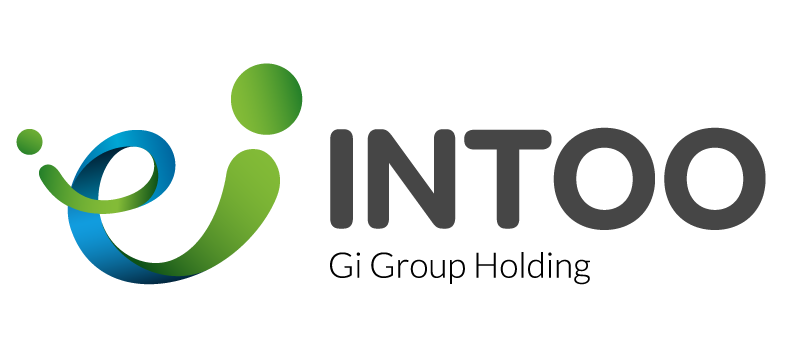Respect is often defined as “a high or special regard,” or “an act of giving particular attention.”
In a workplace context, it goes beyond manners or protocol. It means recognizing the unique strengths, perspectives, and contributions of every individual, and empowering employees to work and thrive in ways that align with their values and lived experiences.
In a respectful environment, employees are not expected to conform to a single mold. Instead, their individuality is seen as an asset. Coworkers offer constructive feedback, acknowledge one another’s efforts, and create space for authenticity. Managers trust their teams not by stepping back entirely, but by providing the autonomy, empathy, and guidance that foster genuine engagement.
Respect is also a key driver of workplace inclusion. It bridges differences and affirms the value of diverse voices. When embedded in culture and policy, it improves communication, cultivates trust, fuels collaboration, and drives performance. For HR leaders and managers, promoting respect is about creating the conditions where people can do their best work.
How Can You Assess Respect in Your Organization?
To truly understand how respectfully your team members work within your organization, you need multiple listening channels – formal and informal, quantitative and qualitative. And it takes deliberate listening and a variety of feedback mechanisms that reveal how employees experience their environment across roles, departments, and identities.
Here are some ways to assess whether respect is part of your workplace culture:
Employee engagement surveys: Include questions that reveal whether employees feel valued, heard, and treated fairly. These metrics offer a pulse on how respect shapes day-to-day experiences.
360-degree feedback: Evaluate leaders and peers through multi-source feedback that focuses on empathy, communication, and inclusive behavior—core elements of respect.
One-on-one check-ins: Consistent, meaningful conversations between managers and employees surface whether team members feel supported, trusted, and psychologically safe.
Pulse surveys: Frequent, short surveys can track respect-related indicators such as fairness, team dynamics, and communication across time and functions.
Exit and stay interviews: Departing employees often cite a lack of respect as a factor in their decision to leave. Similarly, those who choose to stay can highlight what makes them feel valued.
Team retrospectives: Facilitated reflections, especially after major projects, reveal whether people felt included and heard in the process, and not just judged on outcomes.
Manager effectiveness ratings: Review scores are tied to respect-driven behaviors like listening, fairness, and trust. These insights help identify where leadership is strengthening or weakening the culture.
10 Ways to Promote Respect in the Workplace
1. Acknowledge each person’s dignity
Respect begins by affirming that every employee brings value, not just through output, but also through presence, perspective, and potential.
- HR can embed dignity into onboarding, values statements, and training programs.
- Managers can demonstrate it through daily appreciation and one-on-one validation.
- Executives set the tone by recognizing team contributions publicly and inclusively.
Action tip: Build dignity-based language into performance frameworks, and celebrate diverse strengths, not just results.
2. Promote active listening and thoughtful communication
Respect is reflected in how we listen. Being present, responding with intention, and avoiding dismissiveness are all signs of a respectful communicator.
- HR can deliver communication workshops and model inclusive facilitation.
- Managers should practice active listening in meetings and feedback sessions.Executives reinforce employees’ value by responding thoughtfully, even under pressure.
Action tip: Offer cross-level training in active listening, de-escalation, and nonverbal respect cues.

3. Reinforce collaboration and shared goals
When teams align around shared purpose, collaboration becomes a form of mutual respect. It reflects trust in others’ abilities and intentions.
- HR can build systems that reward team success, not just individual achievement.
- Managers should clarify shared objectives and promote mutual accountability.
- Executives ensure that strategic alignment is grounded in collective effort, not competition.
Action tip: Spotlight cross-team wins in internal comms to reinforce collective success.
4. Set clear expectations and consistent behavioral standards
Respect thrives when expectations are clear and consistently upheld across roles, locations, and hierarchies.
- HR should define and document expected behaviors through policies and handbooks.
- Managers can apply those expectations in team norms and feedback.
- Executives must hold themselves and others accountable to those standards, without exception.
Action tip: Conduct a culture audit to ensure behavioral standards are modeled at all levels.
5. Encourage feedback grounded in growth
Respect is evident in the constructive, specific, and elevating nature of feedback.
- HR can introduce respectful feedback models into performance cycles.
- Managers must create a rhythm of coaching that supports ongoing development.
- Executives can model self-awareness by seeking feedback themselves.
Action tip: Implement a feedback guide that aligns with organizational values and tone.
6. Demonstrate respectful leadership from the top
Culture starts at the top. When executives lead with humility, fairness, and curiosity, it signals that respect is non-negotiable.
- HR should integrate respect metrics into leadership evaluations and succession planning.
- Managers can reflect leadership in how they support their teams.
- Executives must model vulnerable, values-aligned leadership daily.
Action tip: Include respectful leadership behaviors in executive scorecards and 360 reviews.
7. Create psychological safety for speaking up
Respect creates conditions where people feel safe to express ideas, challenge norms, or admit mistakes without fear of reprisal.
- HR should establish anonymous and open channels for employee feedback.
- Managers need to acknowledge input—especially dissent—with curiosity.
- Executives must back those who speak up, not punish them.
Action tip: Share real stories where speaking up led to meaningful change.
8. Encourage a variety of viewpoints and experiences
Respect thrives in workplaces that actively seek out and value different perspectives. It’s essential to listen to individuals with unique backgrounds and adapt policies to support everyone.
- HR should ensure that all team members have equal opportunities and work to remove any barriers to success.
- Managers can make an effort to highlight and support voices that may often go unheard.
- Executives must treat inclusive practices as integral to the business, not as secondary priorities.
Action tip: Invest in regular listening sessions and visible follow-up actions.
9. Encourage respectful behavior in daily interactions
Small gestures matter. Greetings, names, eye contact, punctuality, tone, these micro-behaviors shape macro culture.
- HR can support awareness campaigns and behavioral nudges.
- Managers should model courtesy and correct micro-disrespect.
- Executives reinforce these behaviors through visibility and consistency.
Action tip: Create and share a “culture of respect” guide rooted in everyday actions.
10. Recognize and reward respectful actions
Recognition is a powerful culture builder. When respectful behaviors are praised, they’re repeated.
- HR can include respect in peer recognition tools and performance incentives.
- Managers should highlight when team members handle conflict with care or collaborate across differences.
- Executives can reinforce respect as a core leadership competency.
Action tip: Celebrate examples of respectful leadership and inclusive teamwork at company-wide events.
Conclusion
Respect is fundamental to a healthy, high-performing workplace. When respect is embedded in daily interactions, it strengthens employee engagement, improves collaboration, and fosters a sense of inclusion across teams. Employees are more likely to share ideas, take initiative, and remain loyal to organizations where they feel acknowledged and treated with fairness.
From everyday communication to formal systems of feedback and recognition, respect must be modeled and reinforced in organizational culture, processes, and policies.
For people managers, now is the time to assess whether respect is genuinely part of your culture and to invest in the tools, practices, and mindset shifts needed to sustain it. With a range of training programs to boost management skills, improve workplace communication, and foster team growth, INTOO can be your partner in building a respectful work environment. Contact us today to learn how we can help.











